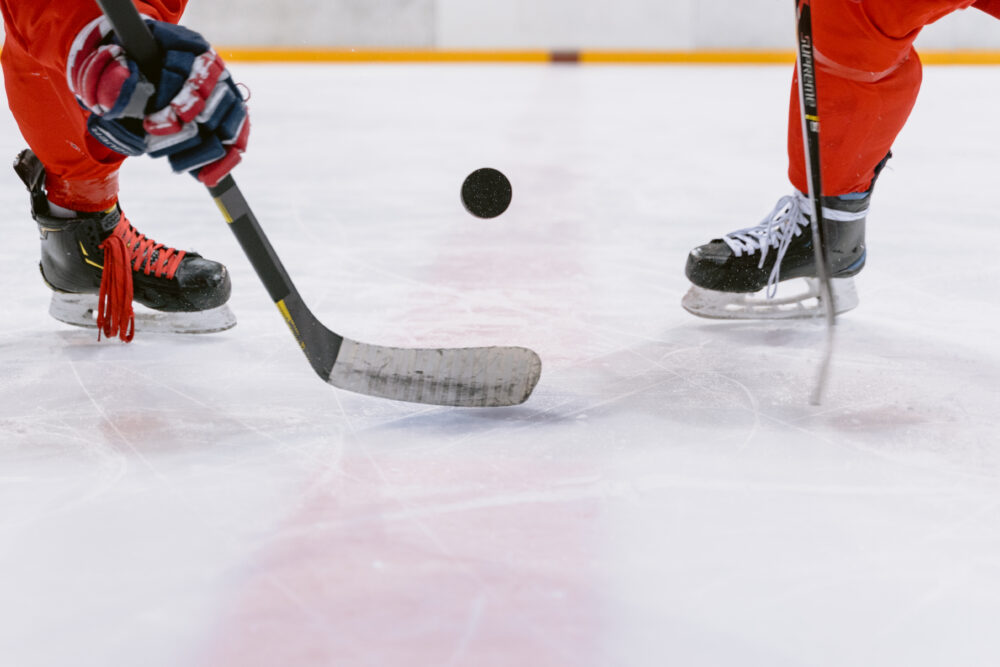With the scratch of skates on ice and the sickening crunch of a head-to-head hit on glass, hockey is marred by many injuries, but none as frequent or consequential as concussions. Though concussions occur across all sports, the risk of injury grows in the fast-paced, full-contact environment of hockey. A study at the Datalys Center for Sports Injury Research and Prevention found that the single-season concussion risk for a player in men’s NCAA hockey is 7.3%, second only to men’s wrestling. The concussion risk for women’s hockey is even higher: 7.6%, the greatest among women’s college sports. Previous concussions are also associated with a two time increase in the odds of incurring another concussion.
The brain is suspended in the skull, protected by a layer of cerebrospinal fluid. Concussions occur when a force causes the brain to crash against the inner wall of the skull. At the impact site, neurons are damaged and bruising can occur on the brain’s soft tissue. Just one concussion is enough to cause permanent changes to the brain’s functions. Repeated traumatic brain injuries have been linked to young-onset non-Alzheimer’s dementia, increased frequency of mental illnesses like depression and anxiety, and death from neurodegenerative diseases.
As both an academic institution and the home of two Division I NCAA hockey teams, Northeastern has a distinct duty to its student-athletes to facilitate their best performance on the ice and in the classroom. Katie Delude, the women’s hockey head athletic trainer, and Dr. Gian Corrado, the head physician, are tasked with maintaining the health of each player. Unlike the NHL, NCAA Hockey lacks independent concussion spotters. This means the onus is on the players, team, and medical staff to identify concussions and pull affected players from the game. Once diagnosed with a concussion, the return to play (RTP) plan begins.
The “plan progression lasts a minimum of 5 days. This means no one is out for less than 5 days from being symptoms-free,” said Delude. “It varies per person. Some people may be in a single phase for a while based on symptoms.” She continues, saying that every player is different and every concussion is different. There is no typical amount of time for RTP and “everyone has a different experience, timeline, and symptoms. What we can say is that most people return to full sport participation.”
The healing process truly begins long before the season starts. When an athlete first starts their career at Northeastern, they take the ImPACT Concussion Test, a computerized tool that measures cognitive skills like memory and reaction time to use as a reference against concussed levels. At the beginning of each year, each athlete also completes the SCAT-5 baseline test; a face-to-face evaluation with a physician examining focus, balance, and recall; and a cranial nerve exam, which is used on the sidelines for suspected concussed players.
When an athlete suffers a concussion at Northeastern, they are first removed from all physical activity. The player’s “Student-Athlete Support Services advisor is notified and a letter is provided to their professors once they are evaluated by a third-party physician,” said Delude. “This allows them to make the academic adjustments they may need such as missing class, getting a note taker, or getting extra time on their work.” She makes an important note that any student at Northeastern with a concussion is able to receive this aid.
Players are then routinely evaluated by a third-party physician, as well as team staff, to remove any pressure to return someone before they have fully healed. This is essential in preventing an athlete from experiencing Second Impact Syndrome (SIS). A second concussive impact on a not-yet-healed brain has a compounding effect, and the brain swells rapidly. SIS is nearly untreatable and often immediately fatal. To ensure players are not returned too early, Northeastern has a checklist they must complete before RTP. Delude outlined this list: Players must be symptom-free, complete their exercise progression, fully return to the classroom, and pass their ImPACT Test compared to their baseline scores. Ultimately, player health is of the utmost importance. Northeastern’s team of physicians and trainers takes a holistic approach to bring athletes from initial impact to RTP.
Image courtesy of Pexels






